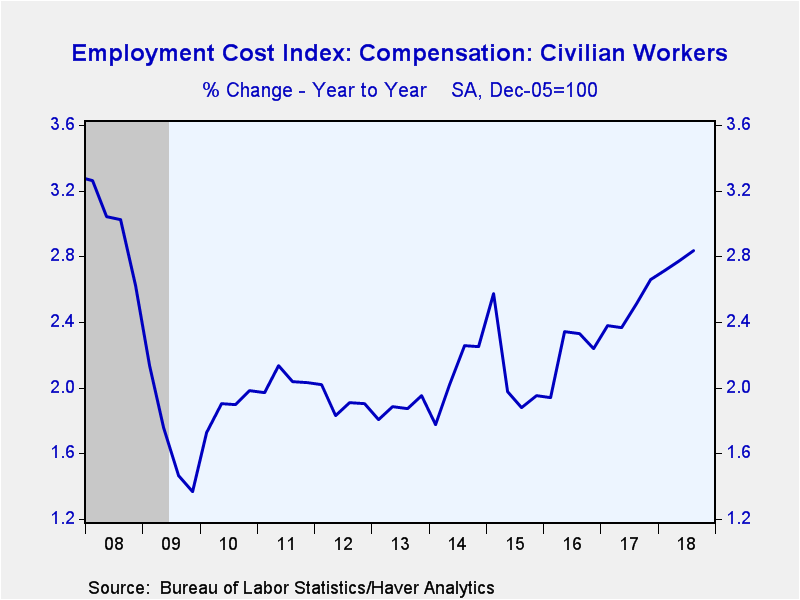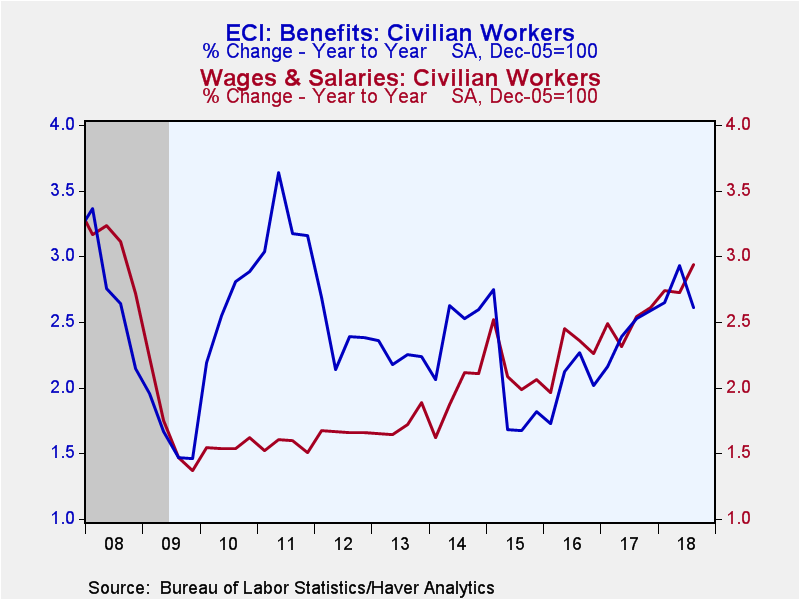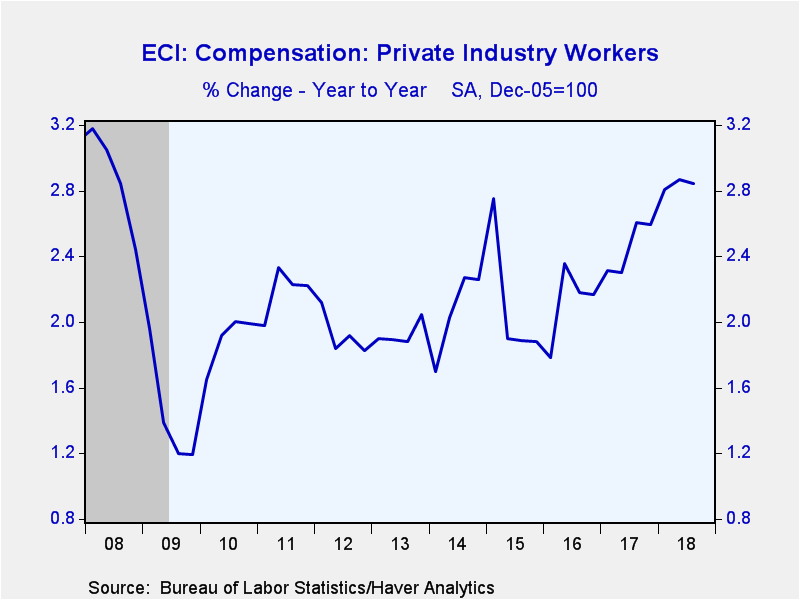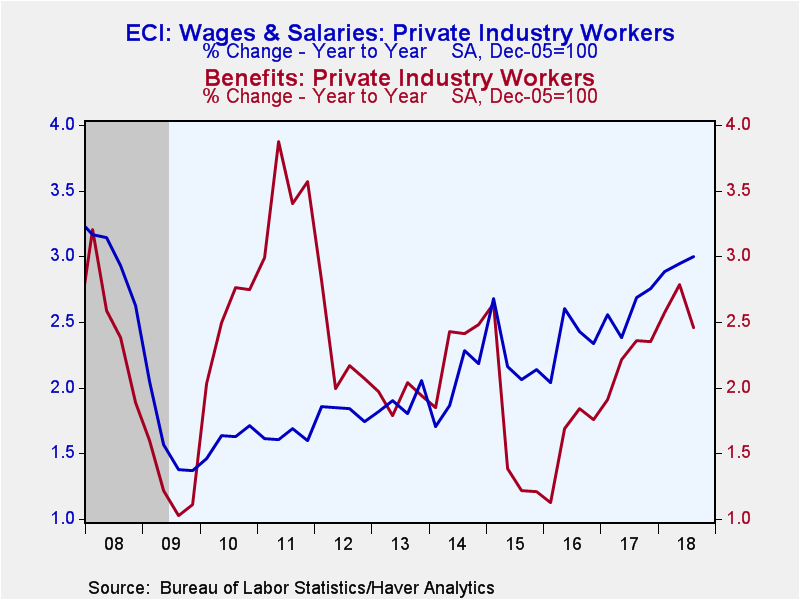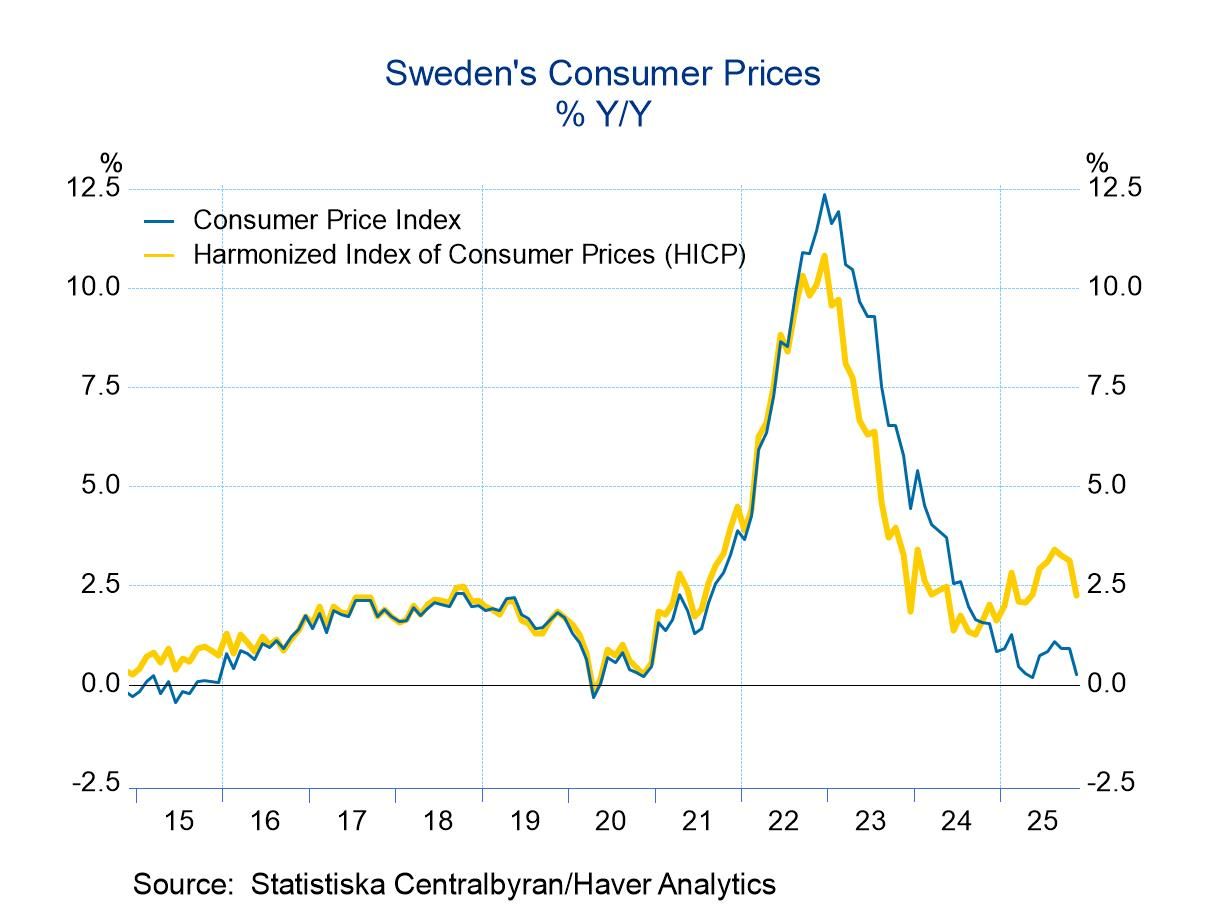 Global| Oct 31 2018
Global| Oct 31 2018Jump in Wages Boosts U.S. Employment Costs in Q3
by:Sandy Batten
|in:Economy in Brief
Summary
The employment cost index for civilian workers rose 0.8% q/q (2.8% y/y) in the third quarter of 2018, up from a 0.6% q/q rise in the second. Action Economics Forecast Survey had looked for a 0.7% q/q increase. Employment costs in the [...]
The employment cost index for civilian workers rose 0.8% q/q (2.8% y/y) in the third quarter of 2018, up from a 0.6% q/q rise in the second. Action Economics Forecast Survey had looked for a 0.7% q/q increase. Employment costs in the third quarter were boosted by a jump in wages. They were up 0.9% q/q (2.9% y/y) in Q3 after a modest 0.5% q/q rise in Q2. The third quarter increase in wages tied Q1 as the largest quarterly gain in the current economic expansion. By contrast, benefits rose only 0.4% q/q (2.6% y/y) in Q3 following a 0.9% q/q surge in Q2.
While at one decimal place, the y/y rate of advance of total compensation in Q3, at 2.8%, was unchanged from Q2, it actually continued to accelerate. At two decimal places, the y/y rate rose to 2.83% from 2.78% in Q2. This was the fastest annual pace of advance since the third quarter of 2008. The pickup in wage growth is even more startling. Wages increased 2.94% y/y in Q3, up from 2.73% in Q2. This was also the fastest rate of advance since Q3 2008. Moreover, this was the fifth consecutive quarter in which the y/y rate of growth has increased for total compensation. For wages, the y/y rate has increased in four of the past five quarters. So, notwithstanding the head shaking among economists as to why labor compensation has not risen more given that the unemployment rate is at an almost 50-year low, the employment cost index and its components have been gradually accelerating and point to an ongoing, albeit gradual, tightening of labor-market conditions.
Compensation gains in service-producing sectors propelled the overall increase in Q3. Total compensation in service-producing sectors jumped 0.9% q/q (3.0% y/y) in Q3 following a 0.6% q/q increase in Q2 with public administration compensation up 0.9% q/q (2.7% y/y) in Q3 on top of a 0.7% q/q gain in Q2. By contrast, compensation in goods-producing sectors slowed to 0.3% q/q (2.3% y/y) in Q3 from 0.6% q/q in Q2 and 0.8% q/q in Q1.
Total compensation for private industry workers also rose 0.8% q/q (2.8% y/y) in the third quarter versus a 0.6% q/q increase in Q2. As for the overall economy, wages growth in Q3 was also the major factor behind the rise in total private sector compensation. Private sector wages were up 0.8% q/q (3.0% y/y) in Q3 following a 0.6% q/q rise in Q2. Private sector benefits increased a more modest 0.4% q/q (2.5% y/y) in Q3, down from a 0.8% q/q gain in Q2.
The employment cost index figures are available in Haver's USECON database. Consensus estimates come from the Action Economics survey in Haver's AS1REPNA database
Sandy Batten
AuthorMore in Author Profile »Sandy Batten has more than 30 years of experience analyzing industrial economies and financial markets and a wide range of experience across the financial services sector, government, and academia. Before joining Haver Analytics, Sandy was a Vice President and Senior Economist at Citibank; Senior Credit Market Analyst at CDC Investment Management, Managing Director at Bear Stearns, and Executive Director at JPMorgan. In 2008, Sandy was named the most accurate US forecaster by the National Association for Business Economics. He is a member of the New York Forecasters Club, NABE, and the American Economic Association. Prior to his time in the financial services sector, Sandy was a Research Officer at the Federal Reserve Bank of St. Louis, Senior Staff Economist on the President’s Council of Economic Advisors, Deputy Assistant Secretary for Economic Policy at the US Treasury, and Economist at the International Monetary Fund. Sandy has taught economics at St. Louis University, Denison University, and Muskingun College. He has published numerous peer-reviewed articles in a wide range of academic publications. He has a B.A. in economics from the University of Richmond and a M.A. and Ph.D. in economics from The Ohio State University.


